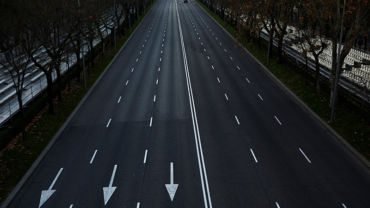The automotive industry within Mercosur (economic bloc composed of Argentina, Brazil, Paraguay and Uruguay), is undergoing important changes within the Mercosur countries.
For Brazil, progress is being made through the implementation of Plan Rota 2030, which aims to stimulate the modernization of the industry and the energy efficiency of automobiles; also serving as replacement of the Inovar-Auto plan, penalized by the World Trade Organization (WTO) due to undercover subsidies.
This incentive program, made by the Brazilian government, generated enthusiasm in the automotive industry of that country. However, for those on the side of the Argentine border, this caused concerns, mostly due to the impact that this plan could bring to the future investments of countries that are not Brazil.
Brazil is one of the world’s top ten car producers, with 2.7 million vehicles produced in 2017, while Argentina produced about 0.5 million; according to data provided by the International Organization of Automotive Manufacturers (OICA). Despite these disparities, the Argentine automotive industry is one of the main drivers of Argentina’s economy, contributing to nearly 10% of the total amount of exports.
Argentina and Brazil are big trading partners and maintain an automotive agreement with a specific exchange rate called flex. This rate means that, for every dollar exported, Argentine automotive companies are authorized to import 1.5 dollars in Brazilian’s cars. This agreement expires in mid-2020, with the Argentine government attempting to extend this agreement for two additional years, and so far without success. From Brazil’s perspective, they intend to raise this measure with Argentina from 1.5 to 1.7 or 1.8 dollars. Although there was no agreement between the governments in relation to the extension of current exchange rates, there would be in the renewal of the Common Automotive Pact (PAC), in which the conditions of exchange of vehicles and parts are defined.
In parallel, the Argentine government along with Companies and Unions, have agreed on the One Million Vehicles Plan, a plan aimed at boosting the production of the Argentine automotive industry and generating an estimated 30 thousand jobs, through an increase in investment, and the incorporation of new technologies and facilities to improve access to the purchase of units. According to the Argentine authorities, 2018 is expected to close with a production of 860,000 units, and the planned goal of one million vehicles per year is expected to be reached in 2023.
Another aspect in which both Brazil and Argentina are aligned is the advancement of mutual recognition agreements (MRA), so that their programs of authorized economic operator (AEO) offer benefits in reducing cost and time in the flow of operations between both countries.
The AEO program is a normative framework proposed by the World Customs Organization (WCO) to ensure and facilitate global trade. Currently more than 70 countries have, or are in the process of implementing this type of program.
The automotive industry is one of the best prepared to certify AEO, in fact, all automotive manufacturers present in Argentina are in pilot. Once implemented, it’s estimated savings of around USD 15 million per company per year.
In perspective, the close political and economic relationship between Brazil and Argentina initiated with the Mercosur foundation in 1991, continues to prosper regardless of the occasional friction that may occur in commercial relationships.
Although the Brazilian economic crisis that began in 2014 strongly affected trade, this country continues to be Argentina’s main trading partner. In the last year the exchange has been USD 27 billion, with a record surplus clearly favorable to Brazil of USD 8 billion. Despite this, Brazil is the destination of 40% of Argentina’s industrial exports, with the automotive industry as the main industry. Argentina is the third commercial partner for Brazil, behind China and the United States.
Within Mercosur, the next step for these two countries possessing enormous potential to increase their foreign trade flow, would be to achieve the realization of free trade agreements, with a prioritized focus on agreements with the European Union (UE); a large trading partner of this South American bloc. Negotiations with the EU and Mercosur have been going on for 20 years and of recent is advancing rapidly, fueled by the protectionist policies of the United States, which forces big powers to seek new markets.






